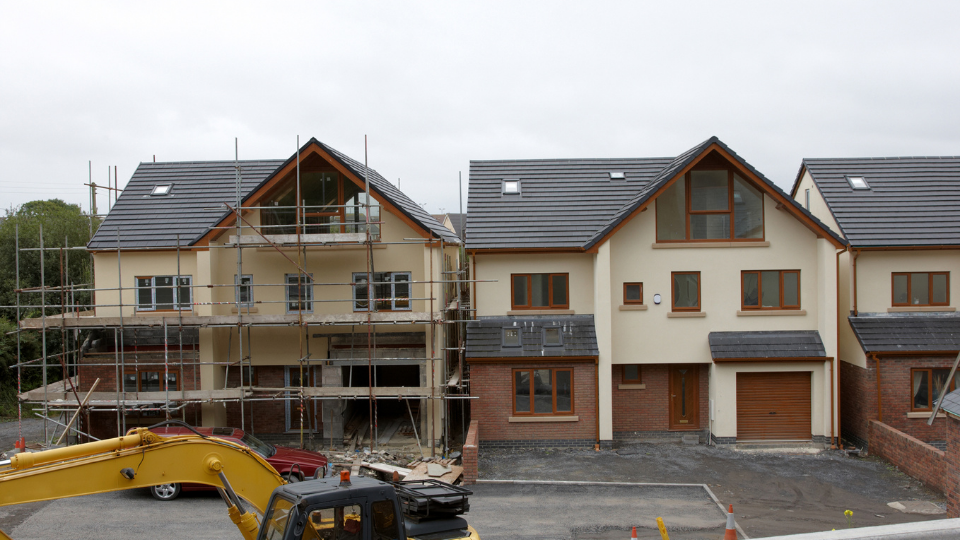All you need to know about land and construction loans
Dreaming of that perfect home? Finding a place that has everything you want and need isn’t easy. But there is a way you can guarantee that you get the property of your dreams – build it yourself.
If you’ve never thought about building your own home before then, you probably have a lot of questions about how the whole process works, and importantly, how you can finance your build.
Land and construction loans are a mortgage type tailor-made for those building their own home. They often end up saving you money when compared to a traditional home loan because of the way funds are paid out to you.
How does it work?
Land and construction loans give you access to only the amount of money you need at any one stage of the construction process. Payments are drawn down progressively, and in most cases, you pay interest on only the amount you have used so far.
Because you’re only paying interest on part of the total amount you will end up borrowing, you make some significant savings in interest while your property is still under construction.
How are progressive payments made?
Once you’ve purchased the land, the remainder of the loan is usually paid over five stages. Once each stage is completed and signed off on, the lender will send payment directly to the builder.
The five stages are typically:
1. Slab down
This includes levelling the land, laying the foundation, and installing any plumbing.
2. Frame
This stage covers trusses, windows, roofing, and some of the brickwork.
3. Lock-up
This stage covers everything that makes your new home ‘lockable’ – external walls, doors, windows, etc.
4. Fitout
The fitout stage covers the home’s internal fixtures, such as internal cladding, benches and cupboards, and plumbing and electrical.
5. Completion
Any final touches, painting, electrical fittings, and cleaning are covered in the completion stage.
Until construction is finished, you’re usually only obliged to pay the interest instead of paying down the principal on the amount you’ve borrowed so far. Once construction is completed, though, you’ll have to start paying both principal and interest unless you’ve pre-negotiated an interest-only period with your lender.
How do I get a construction loan?
A land and construction loan is different from a regular home loan, so it only makes sense that getting the loan is different too.
Before you apply, you’ll need to know which builder you’re going to use and have a signed contract that you can supply to the lender. You will also need to provide a copy of the plans, specifications, permits, and the builder’s licence and insurance policy.
You’ll also need to provide all of the documentation you would typically expect to with a regular loan application – proof of income, bank statements, etc. ‘
From here, a property appraiser will assess what the value of the house will be on completion and determine how much you will need to borrow.
What are the benefits of choosing a construction loan?
1. Better borrowing capacity
With a land and construction loan, you are often able to borrow money according to the completed value of the house, not just the cost of building the property or of the original dwelling (if you’re renovating instead of building from scratch).
2. Pay less interest
Since you’re only paying interest on the amount you’ve borrowed up until any point, instead of the total amount, you can save a significant amount compared to a standard home loan where the total amount is given all at once.
3. Lower repayments
Because repayments are interest-only until construction is complete, your repayments will be lower than a standard home loan, freeing up extra cash for any unexpected expenses.
Are there any downsides?
1. Higher interest rates
The interest rates for construction loans typically tend to run a little higher than a standard mortgage. You can always get around this, though, by refinancing to a traditional mortgage once construction is complete.
2. Contact changes might not be covered
When it comes to most lenders, any changes that occur to the contract after the loan has been granted, or any incidental costs that come up, will need to be covered out of pocket by you.
3. More paperwork
Construction loans require more paperwork than a standard home loan, requiring more time and effort from the borrower.
If you’re thinking of getting a construction and land loan, a good first step is talking to a broker – they can help you find a competitive rate, and a broker’s experience can help you manage the additional steps required for approval.
